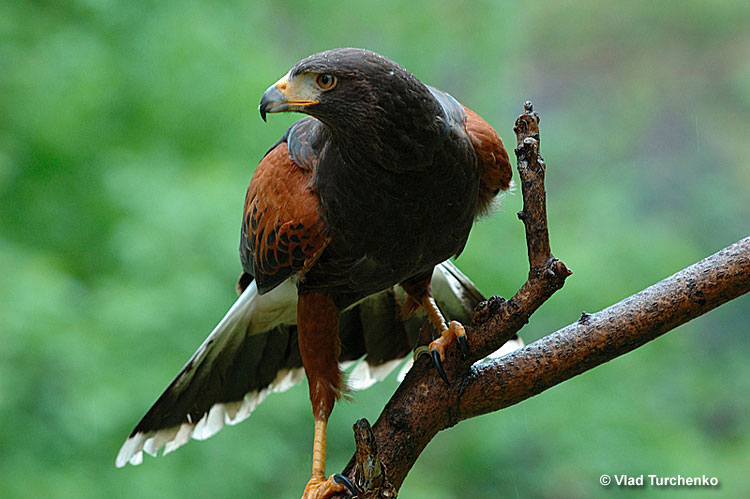The Harris’s Hawk really stands out with its bold white, chestnut red, and dark brown markings.
They’re the most social raptors in North America. They hunt together as a team and cooperate at nests. When hunting, a group of these hawks will surround their prey and flush it out for another bird to catch.
This hawk’s relative ease with humans and social nature has made them popular in education programs and for falconers.
On this page
Identification
Harris’s Hawks have reddish-brown feathers on the thighs and wings and are dark brown overall. They have a white terminal band, a white rump, and a mostly dark tail. From below, the inner portions of the wings are reddish-brown. Female Harris’s Hawks look identical to male Harris’s Hawks.
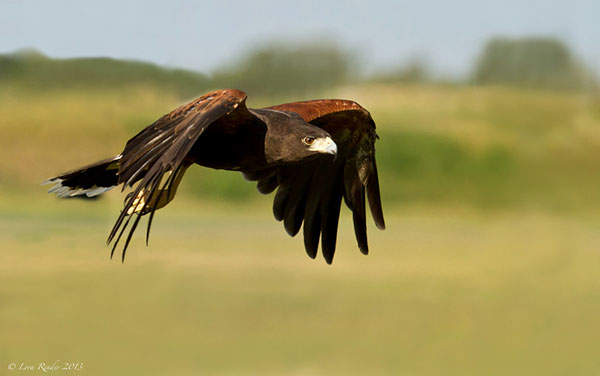
These birds are 18.1 to 23.2 inches (46 to 59 centimeters), weigh 18.2 to 31.0 ounces (515 to 880 grams), and have a wingspan of 40.5 to 46.9 inches (103 to 119 centimeters). They’re smaller than a Golden Eagle and larger than a Cooper’s Hawk.
Juvenile Harris’s Hawks have patches of white on the belly and near the wingtips. Young birds have white on the belly and in the underwings that vary; some of them are almost as dark as adults. Lastly, the white band at the tip of the tail is thinner than in adults.
Food
Harris’s Hawks diet primarily consists of mammals that are medium-sized such as ground squirrels, rabbits, hares, and other rodents. However, they may also take medium-sized birds, reptiles, and quail.
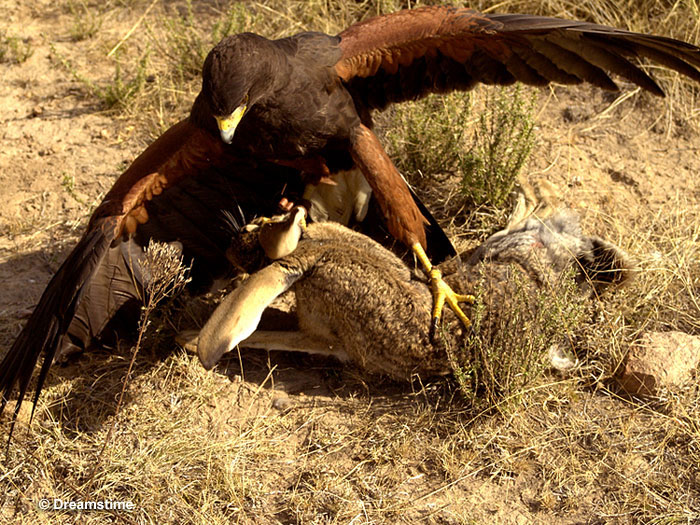
Individual Harris’s Hawks that are in a group often take turns consuming downed prey. Additionally, groups of these birds will occasionally defend bigger carcasses against intruders who would take the prey for themselves.
Nesting and Eggs
Harris’s Hawks place their nests in almost any sturdy, fairly tall structure. These structures include mesquite trees, native saguaro cacti, and cliffs. Nests may also be found on human-made structures such as weather antennae, electrical transmission towers, artificial nesting platforms, and windmill platforms.
Nests are bulky and made from parts of cacti and sticks. They’re lined with the same materials as well as down, feathers, and grass. A mated pair will build the nest, but the female does the majority of the work. Materials are often added throughout the nesting season.
Nests are sometimes elliptical in shape and are around 9 inches deep and 18 to 24 inches wide. The inner cup is about 1 to 4 inches tall and 6 to 14 inches wide.
Harris’s Hawks generally have 1 to 5 eggs, and they incubate them for up to 36 days. After that, the young hawks stay in the nest for around 48 days.
Current Situation
Harris’s Hawks are relatively common birds. However, their populations have declined yearly by 2% from the late 1960s to 2015. Their estimated breeding population is 920,000. Still, the numbers are fairly stable, so they’re a species of low concern.
This species of hawk is vulnerable to habitat loss due to oil and gas development and urbanization, which reduces prey availability and habitat quality. Brush control has eliminated the mesquite habitat, which can threaten populations in certain areas. An additional effect of urbanization is this bird’s option to use natural perches.
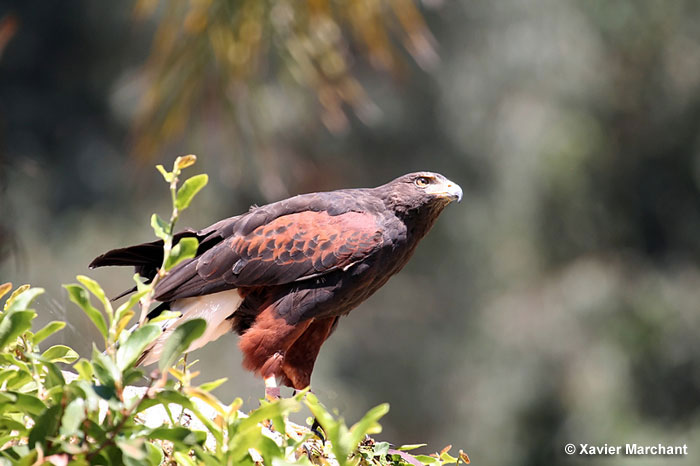
They’ll choose to perch on power poles which usually causes electrocution and can kill several individuals in a group. The good news is electric companies are working to make utility lines that reduce electrocution risk for birds.
Harris’s Hawks live in desert lowlands that are semi-open. They prefer to inhabit organ pipe, saguaro, and mesquite cacti but will also inhabit some wetland and savannah habitats.
Their territories include high perches such as power poles, boulders, and trees, which the birds use as nesting sites, feeding platforms, and lookouts. Access to water is essential for animals who live in hot environments.
Because of this, these birds usually choose areas that include water features such as cattle tanks, water catchments, and springs.
Learn more: Falcons vs Hawks – the main differences
Facts
- Harris’s Hawks hunt in groups and are more successful at capturing prey than those who hunt alone. In addition, hawks with more than two members in their group have a better chance of survival.
- This hawk species will sometimes cache its prey in trees to save it for later.
- Subadults and older nestlings can sometimes be seen playing by jumping on sticks, imitating prey capture, or chasing insects.
- The long legs of these hawks are covered in tough skin, which allows them to perch on cacti!
- Electrocution from power poles is a significant risk to Harris’s Hawks. They’ve lost limbs and even been killed. However, group members will sometimes provide food to injured individuals and provide aid.
Similar Species
The Harris’s Hawk has features that are similar to other birds. Here are some similar species:
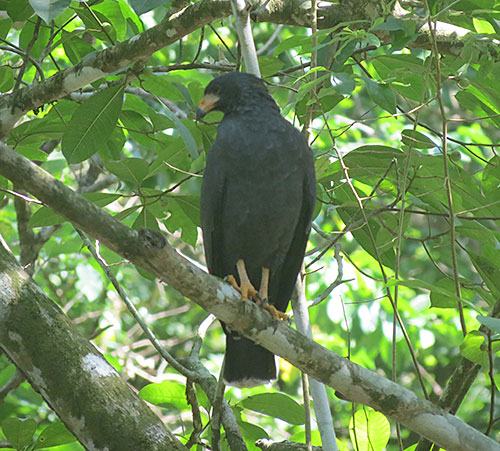
Common Black Hawk
Common Black Hawk
Harris’s Hawks have reddish-brown shoulder patches, while Common Black Hawks are entirely black.
Additionally, Common Black Hawks have shorter tails and broader wings.
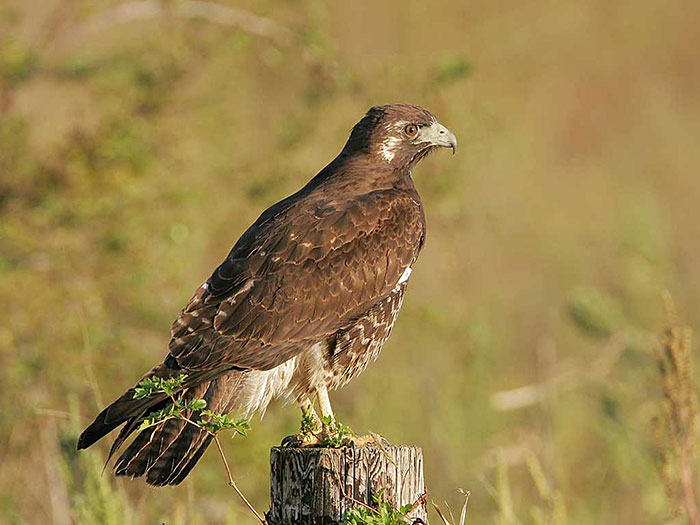
White-tailed Hawk
White-tailed Hawks have white underparts, while Harris’s Hawks are entirely dark brown.
Additionally, White-tailed Hawks have shorter tails and pointed wings.
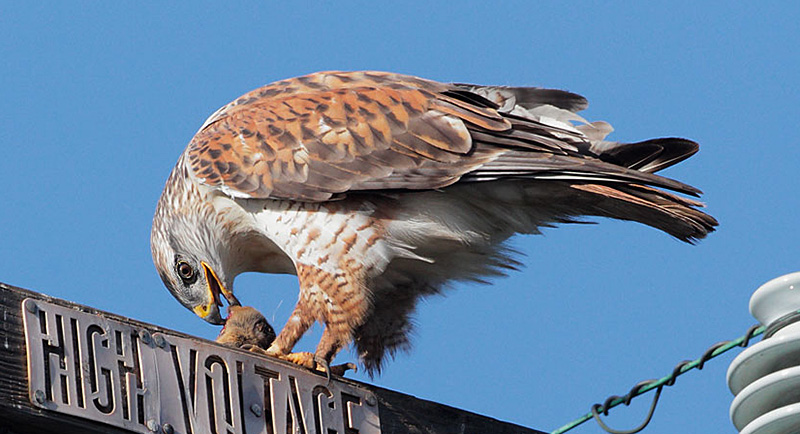
Ferruginous Hawk
Ferruginous Hawks have longer wings and are larger than Harris’s Hawks.
Light morph Ferruginous Hawks have extremely white underparts and are lighter overall, unlike Harris’s Hawks, who are uniformly dark brown.
Dark-morph Ferruginous Hawks lack the wide black band that Harris’s Hawks have and have a white tail.
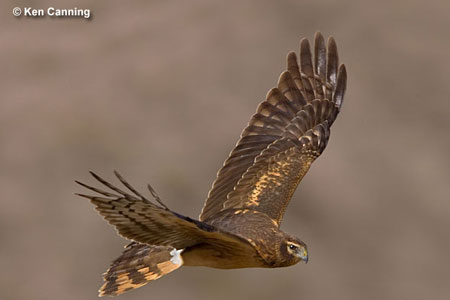
northern harrier
Northern Harriers lack the white band at the end of the tail and reddish shoulder patches that Harris’s Hawks have and have narrower, longer wings.
Frequently Asked Questions
Are Harris’s Hawks rare?
No, Harris’s Hawks are not rare. These birds have a decent range and a stable population.
What is the size of a Harris’s Hawk?
Harris’s Hawks are 18.1 to 23.2 inches (46 to 59 centimeters), weigh 18.2 to 31.0 ounces (515 to 880 grams), and have a wingspan of 40.5 to 46.9 inches (103 to 119 centimeters).
How do you identify Harris’s hawk?
Harris’s Hawks have reddish-brown feathers on the thighs and wings and are dark brown overall. They have a white terminal band, a white rump, and a tail that is mostly dark. From below, the inner portions of the wings are reddish-brown. Juvenile Harris’s Hawks have patches of white on the belly and near the wingtips. Immature birds have white on the belly and in the underwings that vary; some of them are almost as dark as adults. Lastly, the white band at the tip of the tail is thinner than in adults.

